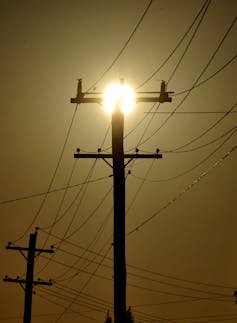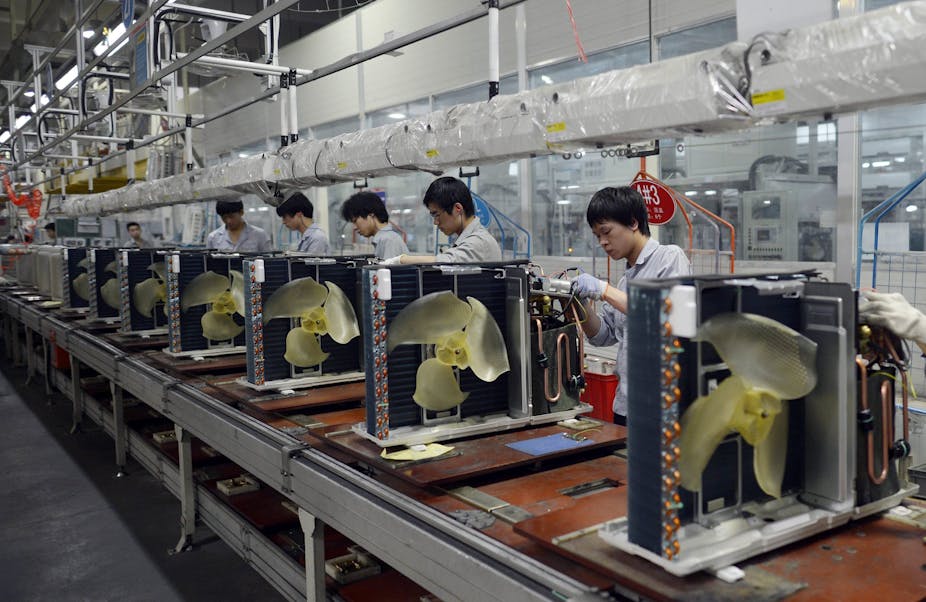With temperatures starting to climb, it’s time to think about how we will stay cool this summer.
The stakes are getting higher when it comes to hot weather. As the Australian Medical Association has warned, heat is a “silent killer”, and we lose more Australians each year to heat than the annual road toll. Heatwaves are also predicted to get hotter and more intense as a result of climate change.
Governments and agencies are taking action through heatwave plans and new pilot programs like the Bureau of Meteorology’s Heatwave Warning Service, due to be launched in early 2014.
However, one thing we are still not talking about are the implications of Australia’s growing reliance on air conditioning.
More air con, bigger bills
Heatwave plans recommend a number of different cooling strategies, but the clear cooling trend is towards home air conditioning.
Three out of every four of Australian households now have a refrigerated air conditioner or an evaporative cooler, which is almost double the rate of ownership back in the late 1990s.
The most obvious problem with air conditioning - and one that will trouble many Australians this summer - is that the cost of running them is rising.
Electricity prices have increased nationally by 70% between June 2007 and December 2012. As a result, air conditioning is becoming much less affordable.

Owners of new homes are often shocked to find that they are using more electricity to keep cool - due to open-plan designs, centralised cooling, and more appliances - despite building efficiency improvements.
The real victims of these price rises are vulnerable low-income households, who are skipping meals, selling possessions and cutting back on essential healthcare to pay their power bills. Sadly, some of these households are also likely to be vulnerable to heatwaves.
An issue that is rarely discussed is that air con use on very hot days, such as during a heatwave, is one of the main causes of rising electricity prices.
This is a confusing message. Many people think they are doing the right thing by only using their air conditioners in sweltering conditions. But this is when most people turn them on, driving up peak demand, investment in the network, and future electricity prices.
Who pays for air conditioning?
More than half of the costs associated with Australia’s rising electricity prices are associated with what the Productivity Commission this year dubbed “spiralling network costs” - essentially, in spending on poles and wires. Much of this investment is required to meet recent and anticipated future growth in peak demand.
A quarter of the entire electricity network is only needed for a few hours on very hot days so that people can run their air conditioners (on top of other demand). This rarely used infrastructure is being paid for by everyone.
This means that households who don’t have an air conditioner are effectively cross-subsidising those that do by A$350 each year.
In the worst case scenario, the Energy Supply Association of Australia warns that the use of air conditioners on very hot days could push household demand to “unprecedented peaks”, potentially resulting in power interruptions.
This would mean that vulnerable households, such as elderly or chronically-ill Australians, may not have access to air conditioning when they need it most.
A key challenge for the electricity industry is how to plan for these possibilities.
The past two summers have been relatively mild, yet air con ownership has continued to grow rapidly, with more than 4.6 million Australian households now using at least one cooler.
Electricity businesses have the difficult job of determining whether to keep upgrading the network to plan for an even higher peak, which potentially means higher energy prices for us all. They are likely to face a fierce public backlash if outages occur as a result of demand for power exceeding the network’s capacity.
Better ways to keep our cool
So what’s the answer? Health agencies, electricity companies and our governments need to start talking about air conditioning, power and looking after our health in hot conditions.
An important part of that public conversation needs to be about protecting vulnerable people in our community: recognising that our increasing use of air conditioners during peak times is making it more expensive for those who really need it.
There are few simple solutions. Telling everyone to turn off their air conditioners in 35-plus degree weather is likely to be unpopular and uncomfortable for many of us. It also places all the blame and responsibility on households. But this does not mean that running air conditioners in our homes is the only or best way to keep cool.
When householders understand the problem of peak demand and rising prices, many are prepared to do something about it, like switch off their air conditioner (or other household appliances), turn it down, or go out for a few hours during the peak.
We also need to make it easier to cool down outside our homes, especially during peak times.

For instance, one possibility is to set up libraries and other public venues as “cooling centres”, particularly to help vulnerable households during heatwaves. This may also require providing incentives and transport options to get people out of their houses on hot days and into cooler public places during the peaks.
Thinking longer-term, we could plan and design neighbourhoods to facilitate better access to communal cooling places, such as shady green spaces, public swimming pools or water features.
We also need to think about how we build and renovate homes - such as making better use of natural cross-ventilation and insulation - so that they do not necessarily need any mechanical cooling at all.

